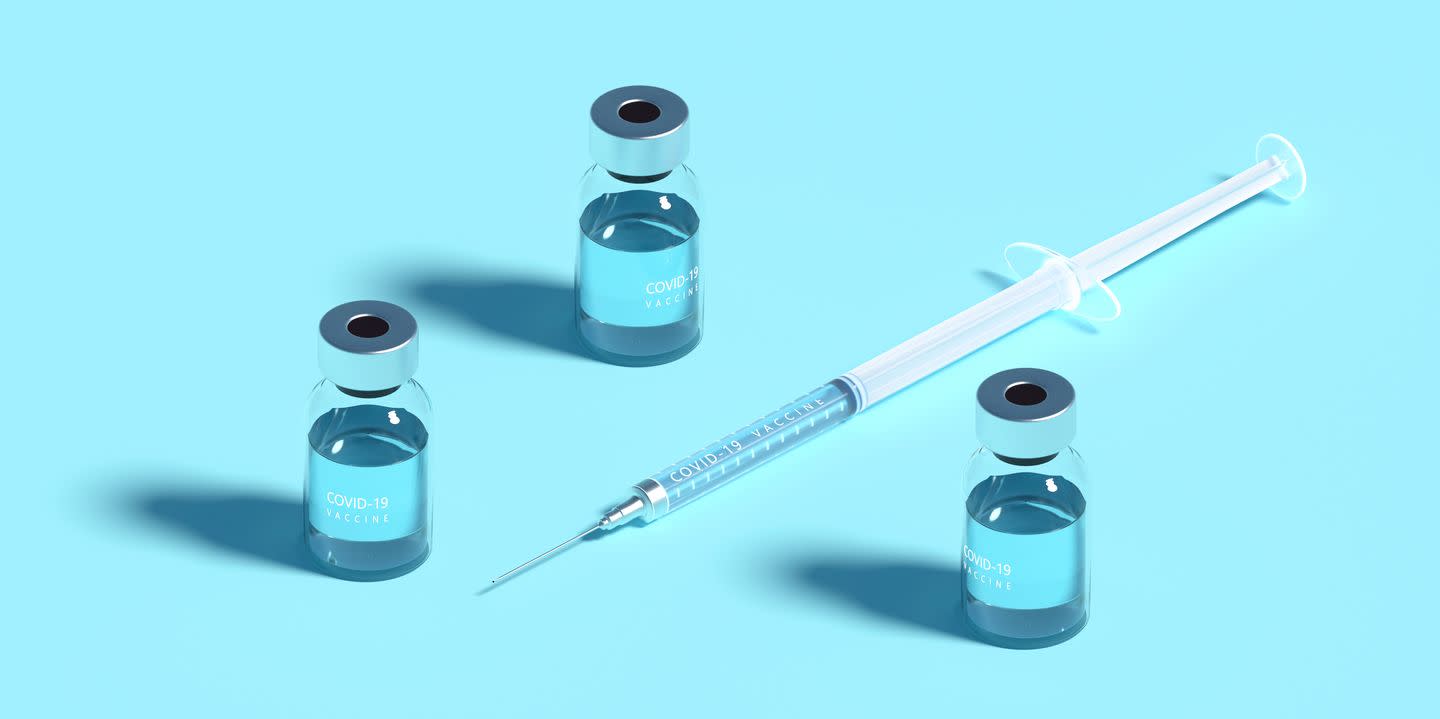
From Good Housekeeping
-
AstraZeneca’s COVID-19 vaccine has been approved for emergency use in the United Kingdom, India and Mexico.
-
Unlike its competitors, the AstraZeneca vaccine is a modified version of a common cold virus that spreads among chimpanzees.
-
This is the first vaccine of its kind to be approved for human use, but other companies are developing similar technology to combat COVID-19.
The United Kingdom became the first country to approve AstraZeneca’s COVID-19 vaccine for emergency use on December 30, just a few weeks after Pfizer and Moderna’s vaccine candidates received the green light from the United States Food and Drug Administration. Approval is another promising sign in the global launch of immunization – especially since this option, developed by the University of Oxford and the biopharmaceutical company AstraZeneca, may be the key to reaching people in rural and underserved areas.
Unlike its competitors, the AstraZeneca COVID-19 vaccine can be stored at higher temperatures, costs less per dose and uses different technologies to immunize people. Although the vaccine has not been approved for use in the United States yet, it may reach arms in the United States in February, at least, The New York Times reports. Here’s what we know about the vaccine so far and how it compares to Pfizer and Moderna.
How does the AstraZeneca COVID-19 vaccine work?
The AstraZeneca vaccine uses adenovirus vectorized technology. Translation: it is a modified and harmless version of a common cold virus that usually spreads only among chimpanzees. This altered virus cannot make you sick, but it carries a gene for the new spike protein from the coronavirus, the portion of the virus that triggers an immune response. This allows the immune system to make antibodies that act against COVID-19, teaching your body to respond if you become infected.
In other words, the AstraZeneca vaccine simulates a COVID-19 infection without its life-threatening side effects, according to a company statement. The reason why researchers chose a chimpanzee adenovirus is simple: the modified virus needs to be New for people being vaccinated – otherwise, the body will not create these important antibodies. Anyone could already have antibodies against the spread of the cold among humans, but far fewer people have been exposed to the spread of the cold among chimpanzees.
The Pfizer-BioNTech and Moderna vaccines, in turn, depend on mRNA technology, which essentially introduces a piece of genetic code that tricks the body into producing COVID-19 antibodies, without the need for viruses. All three vaccines require two doses about a month apart. While no adenovirus vectorized vaccine has been approved for human use before, companies like Johnson & Johnson, CanSino and NantKwest are working on their own versions.
How does the AstraZeneca vaccine compare to Moderna and Pfizer vaccines?
Storage and distribution
AstraZeneca’s vaccine is the easiest to carry so far – it can be stored for up to six months at 36 to 46 ° F, normal refrigerator temperatures. The Moderna and Pfizer options, in turn, should be stored at sub-zero temperatures until they are ready to be used, at -4 ° F and -94 ° F, respectively. (mRNA technology is relatively fragile compared to adenovirus vector technology, which means that it must be maintained at much lower temperatures to remain effective and stable.)
AstraZeneca’s higher storage temperature can make distribution much easier. “A clinic, a nursing home or even [regional] health departments may not have freezers that can hold things at -94 ° F, ”says Kawsar Talaat, MD, an infectious disease physician, vaccine researcher and assistant professor in the International Health department at Johns Hopkins University. Being able to use a typical refrigerator “gives time for distribution, gives time for the vaccine to reach more rural areas, [and allows vaccines] be kept in a clinic for a long period of time. “
Cost
The new vaccine also beats its competitors in price: the AstraZeneca vaccine costs suppliers about US $ 4 per dose, while the Pfizer vaccine costs US $ 20 and Moderna costs US $ 33, reports Al Jazeera. These prices are likely to fluctuate as time passes and vaccines evolve.
Efficiency
The two mRNA vaccines have a slight advantage in efficacy; both Pfizer and Moderna report about 95% effectiveness against COVID-19 after the second injection in clinical trials, while AstraZeneca reported an average effectiveness of 70% and up to 90% if the dosage is adjusted. (For comparison, the annual flu vaccine is usually between 40 and 60% effective, according to the CDC.)
Side effects
The side effects of the three vaccines are similar, including potential pain at the injection site and flu-like symptoms, including fever, fatigue, headaches and muscle aches, which are expected when your immune system is ready.
Which COVID-19 vaccine is the best?
There is no “better” vaccine option, as there is not yet enough research to confirm this. Vaccines are not a silver bullet, especially as the pandemic continues: they must be combined with masks, hand washing and social detachment to function as effectively as possible, according to the CDC. No matter which COVID-19 vaccine is available to you first, you can feel confident in your ability to protect it, as long as you remain cautious until positive cases, hospitalizations and deaths are significantly reduced across the country.
In the meantime, it is likely that “all manufacturers are working to make their vaccines more stable at temperatures that are easier to control,” explains Dr. Talaat. As your formulations change, so do your pros and cons.
For now, we can be grateful that the AstraZeneca vaccine is almost being released worldwide. “The next generation of vaccines, like that of AstraZeneca, which is kept in refrigerator temperatures, is a major advance,” says Dr. Talaat. “When it comes to distribution to the whole world, it is much easier because we already keep the vaccines cool. It is much more difficult to keep things frozen. “
You may also like
